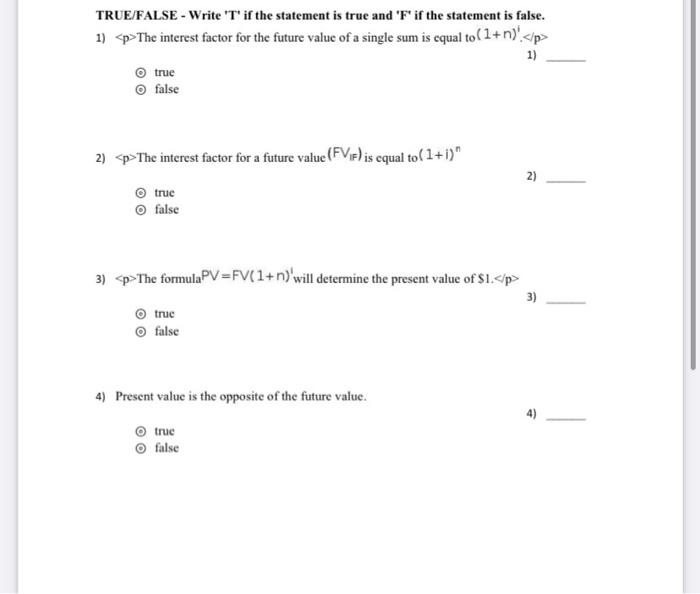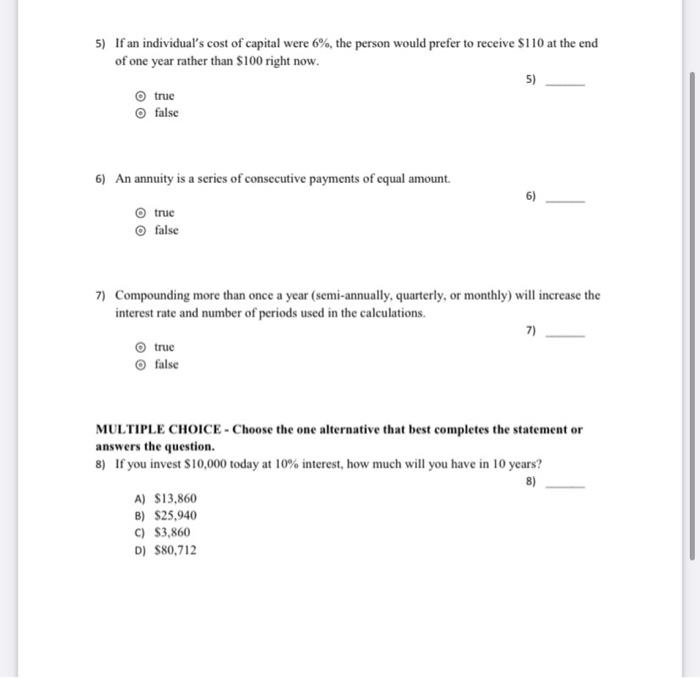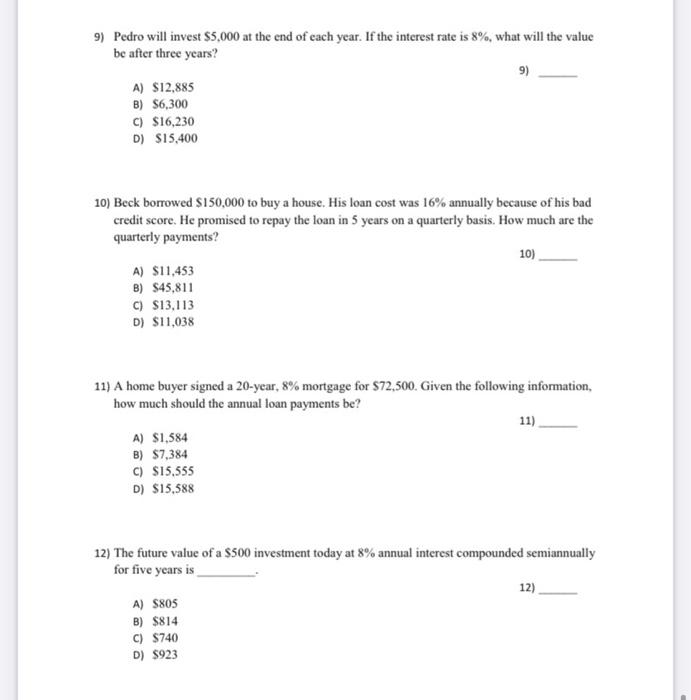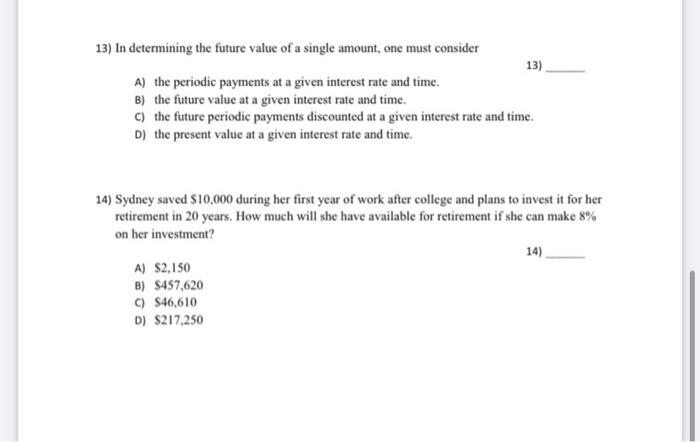Answered step by step
Verified Expert Solution
Question
1 Approved Answer
5) If an individual's cost of capital were 6%, the person would prefer to receive $110 at the end of one year rather than $100




1) true false 2) p> The interest factor for a future value (FVBF)isequalto(1+i)n 2) true false 3) p> The formula PV=FV(1+n) will determine the present value of $1.
3) true false 4) Present value is the opposite of the future value. 4) true false
Step by Step Solution
There are 3 Steps involved in it
Step: 1

Get Instant Access to Expert-Tailored Solutions
See step-by-step solutions with expert insights and AI powered tools for academic success
Step: 2

Step: 3

Ace Your Homework with AI
Get the answers you need in no time with our AI-driven, step-by-step assistance
Get Started


